#historical sewing
Text
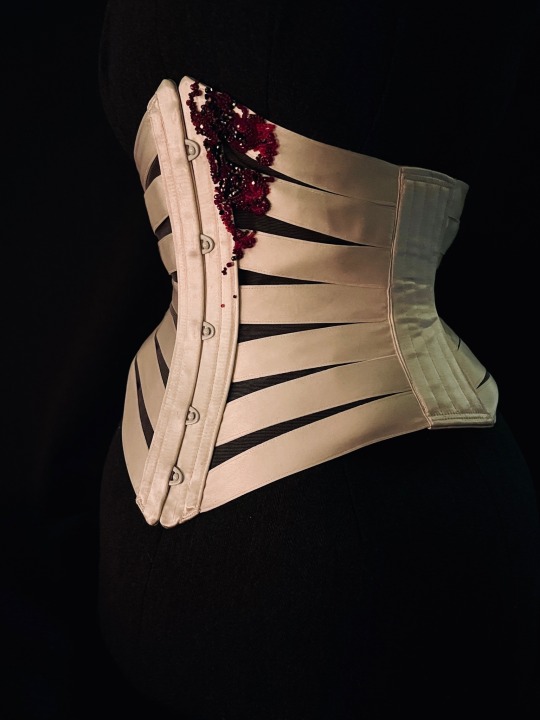

The Saddest Girl In The World
Edwardian-ish ribbon corset with beading, 2023
Silk ribbon, cotton taffeta ribbon, Czech glass beads
#project: crown prince kiriona#project: ribbon corset#project: historical sewing#cosplay#media: the locked tomb#tlt#the locked tomb#historical costume#Edwardian#Nona the ninth#historical sewing#costume#poetry in costume#beading#excuse the iffy lacing I used what I had on hand which is too wide and I didn’t want to unlace Helga#EDIT: upsetti#I captioned it something sensible rather than WHITHER THE HAMBURGER???#there’s time#not sure why this has broken 1000 notes but it is releasing all the brain chemicals
3K notes
·
View notes
Note
This is kind of random, but would it have been a struggle for a big busted women to wear fashionable silhouettes in the medieval era? I’ve heard some costume historians discuss that there were forms of bust support, but most of what I’ve seen pre-1500s seems like it would have been a nightmare for any ancestor with a similar bodytype to wear. Am I just from a line of women doomed to horrible back pain? (On the flip side of the situation, I’ve found corsets and stays to be rather comfortable, so that’s not a problem)
As a fellow big boob haver, I have good news for you! There were pretty good Medieval bust supporting garments and I have tested one of them.
With sturdy fabric, tailoring and lacing you can create pretty good bust support. Lacing was popularized first in 12th century in form of bliaut, and in 14th century tailoring became standard for everyday garments. I don't know how well bliaut supported the bust, but since it doesn't fit super snugly, I assume it doesn't distribute the weight of the boobs as well as tailored supporting garments and therefore isn't as supportive. I'm also not actually sure if there was proper bust supporting garments before that, I haven't looked into it. I know Romans bound their breasts with cloth wrapped around the chest, so maybe that technique continued (at least for those who especially needed it) till lacing and tailoring became a thing. For more about how supporting garments developed in Europe through history, I have a post about development of lacing, which coincides pretty well with that history from 12th century forward.
Personally I have experience with Medieval Bathhouse dress, which was used in the Germanic Central-European area roughly in 14th to 16th century. It's called the Bathhouse dress because most depictions of it are from bathhouse settings, but there's depiction also in bed chambers and other contexts, so I think it's pretty safe to assume it was used more generally as an undergarment. It often had separate cups for the boobs (see the only extant garment left of it, the so called "Lengberg Castle Bra"), but not always. Unlike most other undergarments at the time, it was sort of a shift (the lowest layer) and a supporting garment combined into one.
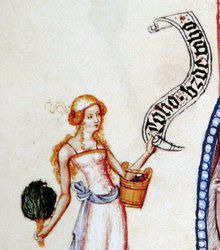

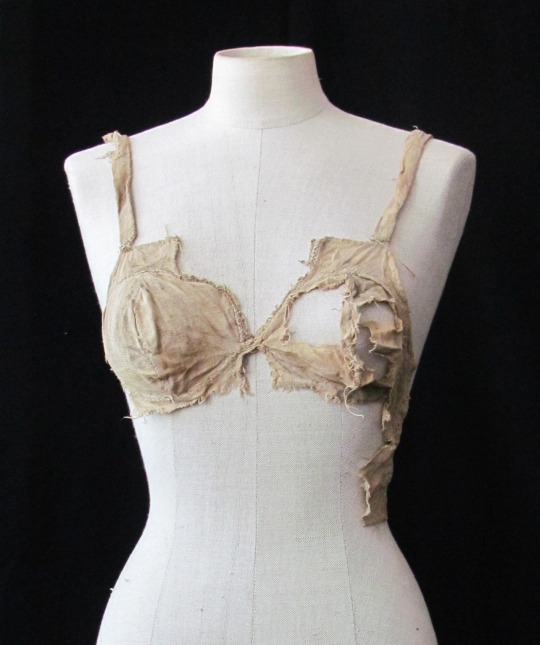
I sewed my own recreation of it (with some alterations because I made it for my everyday use, not as a historical recreation) and did a post about my results, where I go deeper into the history of the garment too. I didn't construct it very well and I did an error in the design of the back, which cause the strain of the shoulder straps to focus too much on very specific spots in the back panel, which eventually made the fabric there break too many times. (There were some other smaller design flaws too, like the waistline is lower than my natural waist so it rose and wrinkled annoyingly.) I did use it daily (except when I washed it) for a fairly long time though and it was super comfortable and helped a lot with back pain (and shoulder pain caused by use of modern bras). I hate that I've had to go back to modern bras because I haven't had the time to remake it yet. (I'll probably make a follow up post once I get around to it, where I go through the issues of the first version and how I addressed them in the next attempt.) Well fitted and shaped bodice which is then laced does surprisingly much even without any additional reinforcements.
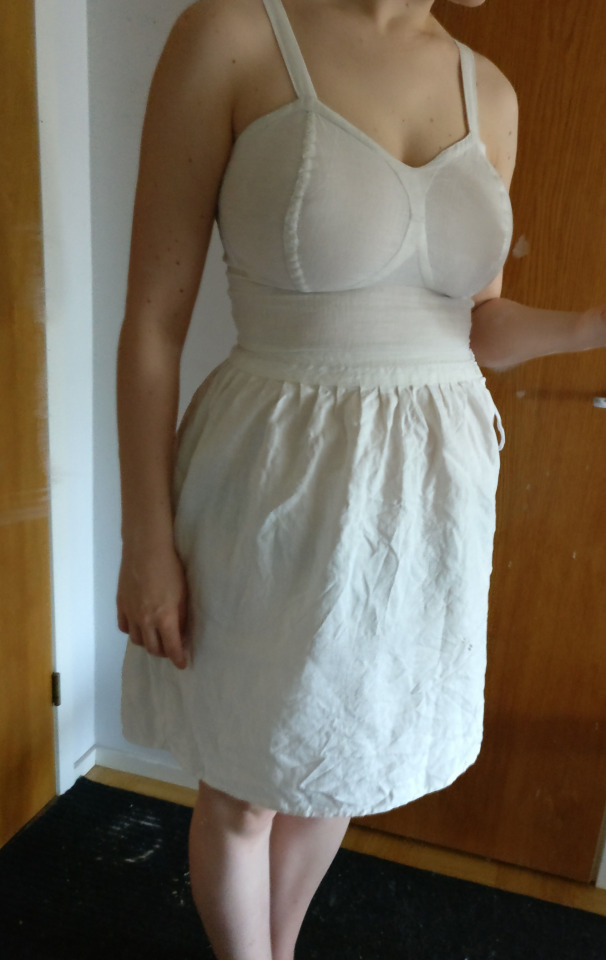

I haven't made a Medieval kirtle (though I will some day), but it was the more widely used Medieval supporting garment, which eventually replaced Bathhouse dress in the area where that was used. Kirtle is worn over a shift, but it broadly works similarly. Kirtles could be front, side or back laced depending on the time period and how the Kirtle was constructed. Multiple layers of kirtles could be used and looser overgarments (like houppelande) were often used on top of it. Kirtle was used by everyone, including men, but for those who didn't need bust support, it's purpose was mainly to create the fashionable silhouette. Here's three depictions of kirtles from 15th century. First unlaced, but has lacing on the front, second close up of the side lacing and third shows nicely how both front and side/backlacing shaped the bust.

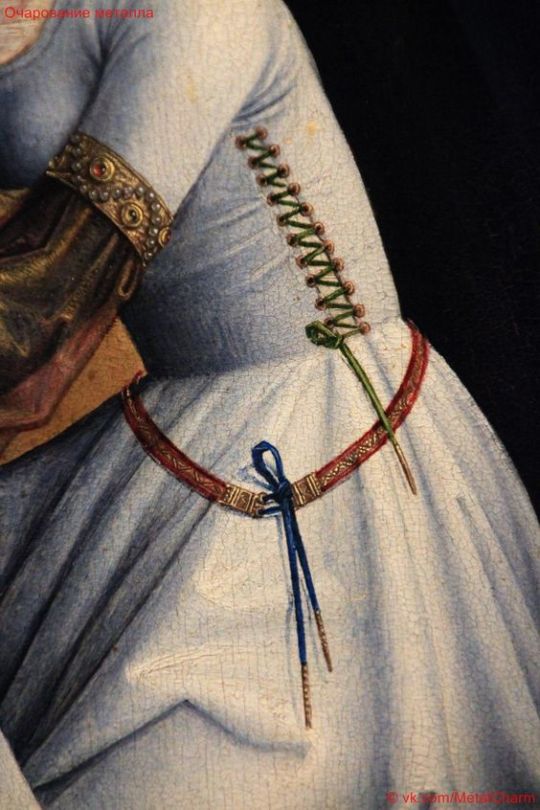
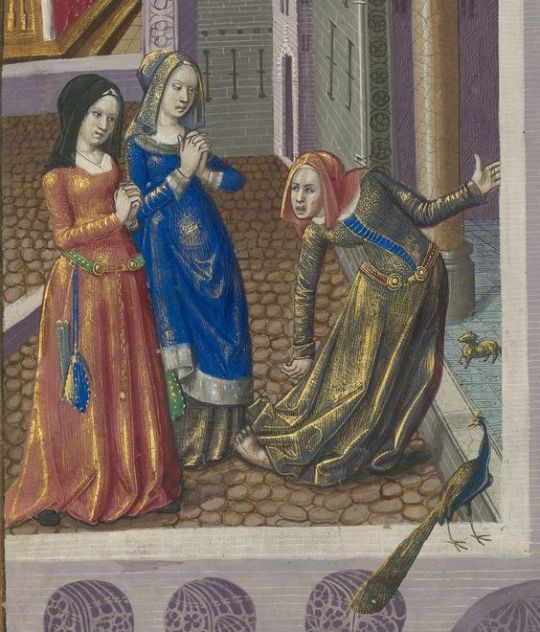
Morgan Donner is a costumer, who focuses a lot on Medieval costuming and has a big bust, so while I haven't personally tested the supportiveness of kirtle, she certainly has. The kirtle bodice part needs to be patterned to accommodate the breasts by giving it round shapes and the kirtle needs to be a little too small so there's room to lace it to fit well. Lining also helps to reinforce the fabric and make it more firm and supportive. Here's Morgan's pattern from the tutorial in her website and how the kirtle eventually fits for her. (Also look at the handsome boy in his handsome matching outfit.)
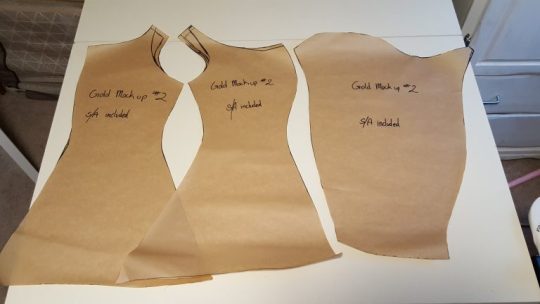
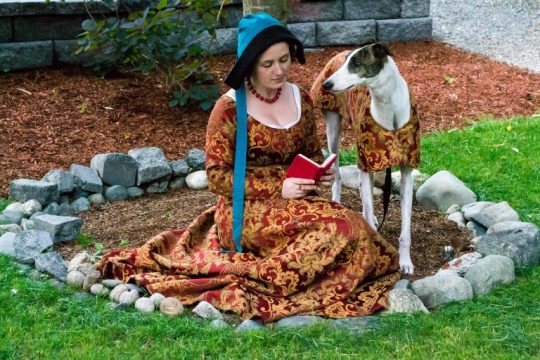
She also has a video relating to the same kirtle project, where she explains her method to pattern a kirtle specifically so it's supportive for big bust.
In 16th century more stiffness was added to kirtles, first with very stiff lining and then with boning, but that doesn't necessarily add to the bust support, rather it just allows the kirtle to shape the bust and the body in general more and better support a heavy skirt. Firm fabric secured snugly with lacing is already very good at distributing the weight of the boobs to the whole torso.
In conclusion, at least since 14th century people with our body type were not doomed to eternal back pain and even before that some ways to help with it were probably used.
#historical fashion#fashion history#dress history#history#historical costuming#historical sewing#sewing#crafts#costuming#fashion#medieval fashion
230 notes
·
View notes
Text
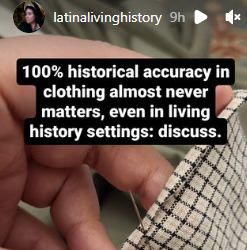
I have a lot of opinions on this but I would love to know what other people think.
#sewing#living history#historical costuming#history#historical reenactment#historical accuracy#historically accurate#historically adequate#historical sewing#museums#material culture#experimental archaeology
326 notes
·
View notes
Text
Shameless holiday Etsy store plug!
It's that time of year again! Crafters, if you're looking for leather thimbles, I got you.
I've never been able to use metal thimbles and it was always a source of frustration because needles start to hurt your finger pretty quickly. A couple of years ago I learned how to make leather thimbles and it changed my sewing and embroidery game entirely. When I got a stack of leather offcuts, though, I ended up with way more material than I needed, so I started making extras and selling them. I started having fun with the kinds of leather I worked with and incorporating fun, colorful designs, and now I stock all sorts in my Etsy store:
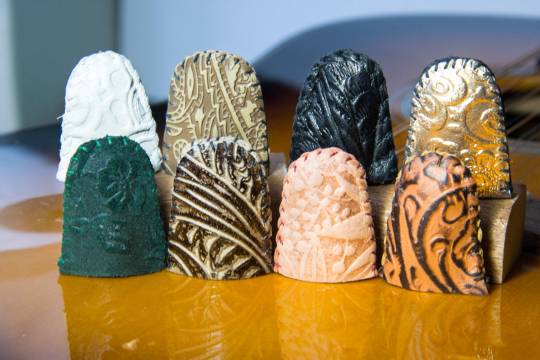

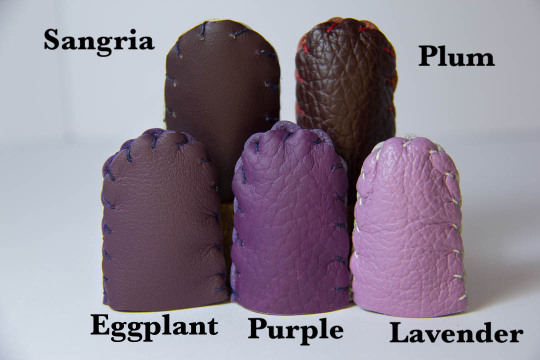


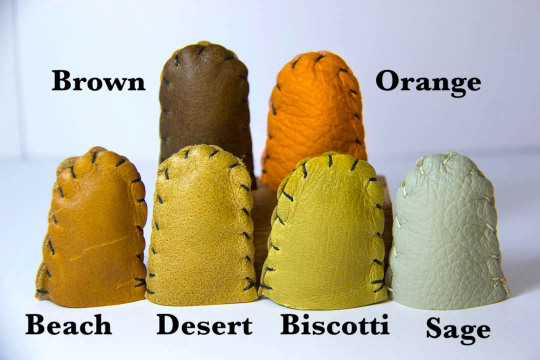
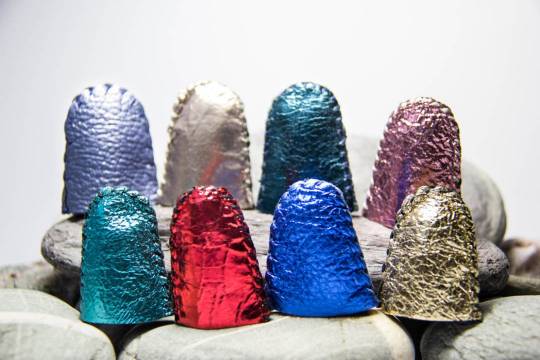
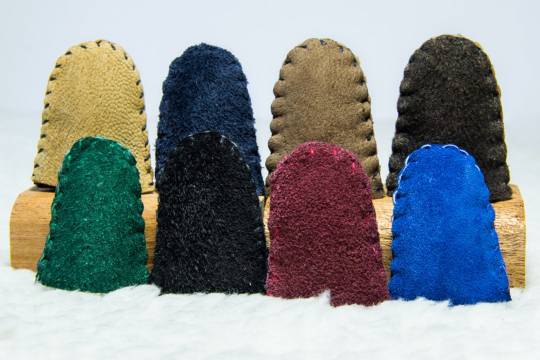
I only use reclaimed leather scraps from other Etsy sellers who I've built personal relationships with, several of whom also use reclaimed leather before selling their own offcuts to me. Each thimble comes wrapped in tissue paper, packing slips are printed on recycled paper, and shipped in unbleached envelopes with labels made from recycled materials.
Whether these are your thing or not, I hope you'll keep independent artisans in mind when you're buying gifts this season! They work hard, are underpaid, and need your support more than corporations.
(Also, if you see an Etsy ad on google or in the ad space of a website, don't click on it! Search for the Etsy store's name through Etsy instead. When you make a purchase after clicking an advertising link, Etsy takes a percentage and keeps doing so every time you go back to that store. Etsy already takes 25%-33% of sellers' profits in fees, don't help them take more! Links like the above that are embedded in an individual person's post are fine, just look out for ads on the side or bottom of websites, blogs, and social media pages, as well as google ads.)
#crafting#etsy#thimbles#sewing#embroidery#historical sewing#gift ideas#holiday gifts#tis the season#knitting#quilting
1K notes
·
View notes
Text
17th century dress inspired by my beloved Versailles royal court fashion. It's mostly handsewn, made out of satin and trimmed with lace. It was the first serious historical costume i have ever made. And to be honest, my favourite one <3
Hair, makeup, model and photo by me <33

#louis xiv fashion#baroque fashion#historical reenactment#louis xiv#french#versailles#17th century#1600s#historical sewing#sewing#historical fashion#17th century fashion#baroque#history#historical costuming#costume
206 notes
·
View notes
Text
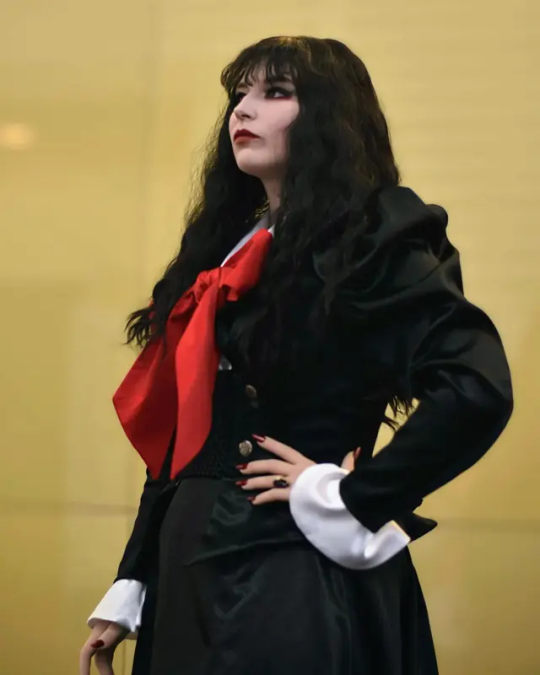


Nadja is so fun to cosplay. She was the perfect excuse to get into using Truly Victorian patterns, which are a dream.
#nadja of antipaxos#nadja wwdits#nadja cosplay#wwdits#wwdits cosplay#what we do in the shadows#vampire#sewing#historical sewing
371 notes
·
View notes
Text

Insertion lace on a pair of Victorian combinations. Museum of Vancouver.
76 notes
·
View notes
Text
so many words about historical men's corsetry
(This got way too long to send via Discord -- Dangimace in the Renegade Bindery server asked about men's corset sewing/resource recs so here is my half-assed and non-exhaustive rundown. Most of my historical sewing is focused on fashions of the UK, US, and Europe for the second half of the 18th century and first half of the 19th century, so that bias is reflected here; also disclaimer overall that "menswear"/"womenswear" are socially constructed categories and real people's bodies have always looked a wider variety of ways than fashion and other social forces would dictate. I sew historical garments with enthusiastic disregard for the historical gender binary and I'm barrel-chested, thick-waisted, and narrow-hipped no matter what I'm wearing.)
Onward, lads!
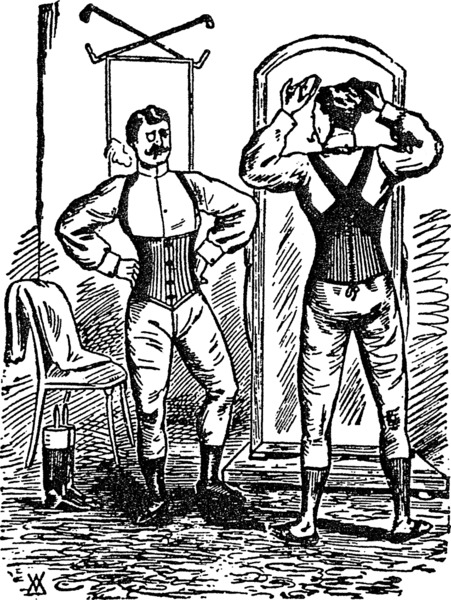
Ok wrt men's corsetry: there's a whole lot of fogginess around how historical men's corsets were constructed for a bunch of annoying reasons but that means there's lots of possibilities to explore in pattern drafting and project planning. Stays and other stiffened body-shaping garments have a whole complex conceptual relationship to the body basically as soon as they start appearing. 16th and 17th century garments do a whole lot of shaping (both compressing and building up) for men and women alike, but things really kick off in the 18th century in terms of the symbolic weight placed on stays and (later) corsets. Whole lot of stuff about gender, social class, race, fatness, morality, etc. getting projected onto these garments. So I'm a little leery about people taking obviously satirical illustrations of fashion-victim dandies or Gross Corpulent Libertines getting laced into corsets as truthful and indicative of the way men were really dressing -- scurrilous gossip and exaggeration are both a pain to sift through if we want to know which men wore corsets, what kind, and why.
In the very late 18th/early 19th century corsets were part of the repertoire for achieving highly fashionable shapes in menswear. (Along with a whole lot of padding.) They weren't mandatory for all dudes, but for fashion-forward dandies and equally fashion-forward military men, male corsets/stays were definitely a thing. The whole Romantic-era pigeon-breasted, narrow-waisted silhouette can be emulated by shapewear worn beneath the clothes, pads in the garments themselves, or both; in addition to waist reduction it helped to maintain smooth visual lines underneath close-fitting garments.
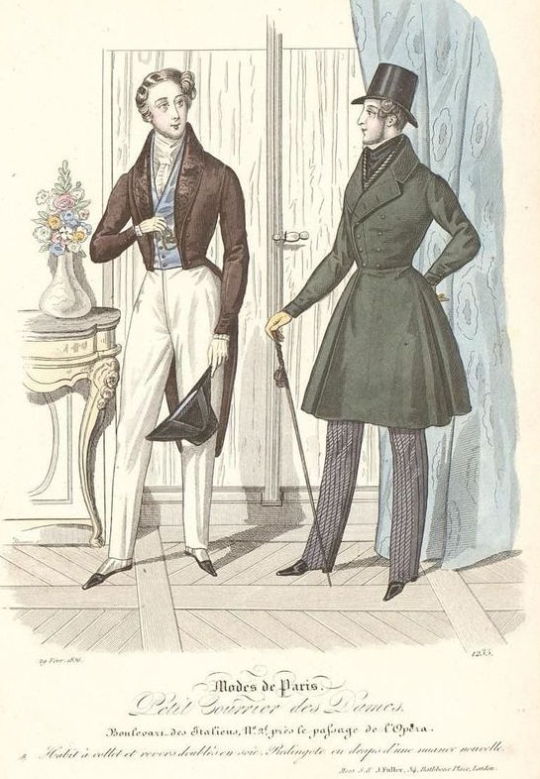
(look at these minxy 1830s dudes and their tiny waists)
As the century goes on the desired menswear silhouette becomes boxier and less fitted, and male corsetry recedes into the background; we start to see patents and advertisements for men's corsetry, so they still seem to have been worn, but there's a lot more language around vigorous manly athleticism and supporting the structures of the body. It can be hard to tell whether a particular piece is intended to be worn primarily for some medical purpose or for its perceived aesthetic benefits. This is giving me such flashbacks to trying to find post-surgical compression garments.
(Side note: there's also a vigorous tradition of fetishist writing about corsetry all through the 19th century, in fairly mainstream channels, which is fascinating. Due to the relatively private and deeply horny nature of fetish tightlacing we don't necessarily know as much about what those same letter-writers may have "really" worn at home, but I hope they were having fun.)
I've seen very few specifically men's corsetry patterns from historical pattern-makers-- not even really big names like Redthreaded. I sewed my 19thc menswear corsets from the men's underbust pattern in Laughing Moon Mercantile #113 which afaik is speculative rather than reproducing a specific historical garment, but it's not too different from the women's late-19th-century underbust patterns in the same pattern pack.
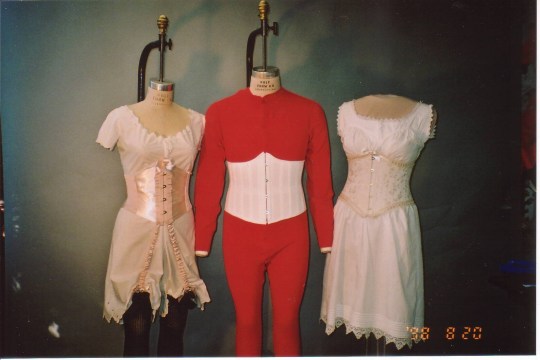
(image credit: LMM)
However, a lot of underbust and waist-cincher patterns from more general historical patternmakers could be made suitable with some minor alterations. Here I'd also rec books like Jill Salen's Corsets: Historical Patterns And Techniques and Norah Waugh's Corsets & Crinolines, though their focus is definitely on womenswear and you need to be relatively comfortable scaling up or drafting from pattern diagrams.
The structural features and desired results for a man's corset are pretty much the same as any other corset (back support, compression in some areas, etc.) even when the desired silhouette is different; commercially-created patterns are drafted with the expectation of certain bodily proportions so like with all corset-sewing it's important to make a mockup for fitting purposes. (I ended up liking one of my mockups so much I finished the process and made it a whole separate corset.) I don't know much about this area but I seem to see a lot more belt-and-buckle closures and criss-crossing straps in corsets designated as being for men -- this might be a byproduct of gendered differences in how people got dressed, but it might be nothing.
There's some weird and wonderful historical examples, both extant and in images -- I appreciated this post at Matsuzake Sewing, "A Brief Discussion Of Men's Stays", and its accompanying roundup of images on Pinterest though the tone wrt historical fetishwear corsets in the blog post is a little snippy. I really want to make a replica of Thomas Chew's 1810s corset (which you can read more about here at the USS Constitution Museum) but it incorporates stretch panels made with a shitload of metal springs and I'm not ready for all the trial and error trying to replicate that.

(image credit: USS Constitution Museum Collections)
There's a pretty rich vein of modern men's corset patterns which seem like they could be easily pattern-hacked for historical costuming purposes, like these with shoulder straps from Corsets By Caroline or DrobeStoreUpcycling's waist cincher which also looks like it could be altered pretty easily to cinch with straps and buckles like some 19thc men's corsetry does. This pattern for a boned chest binder in vest form by KennaSewLastCentury is also really cool but I didn't get a chance to sew it pre-top-surgery. (I think I've also seen someone who made a chest-compressing variation on Regency short stays, but I can't find it now.)
In general a lot of underbust and waist-cincher patterns should work just fine for silhouette-shaping without much bust/hip emphasis -- my usual resource for free corset patterns (Aranea Black) recently took down all her free patterns but they're definitely still circulating out there. For general fashion purposes the sky is the limit and there are a lot of enthusiastic dudes in corsets out there. This Lucy Corsetry round-up shows a variety of modern corsetiers' styles designated as being for men or more masculine silhouettes (including a SUPER aspirational brocaded corset with matching waistcoat made by Heavenly Corsets that I'd love to sew a historical spin on) and you can see some commonalities and possibilities for body-shaping.
I can also give some more general corset-sewing resources but I'm very much in the learning process here and I'd love any recs or input from people more experienced in pattern-drafting and corset-sewing.
93 notes
·
View notes
Text
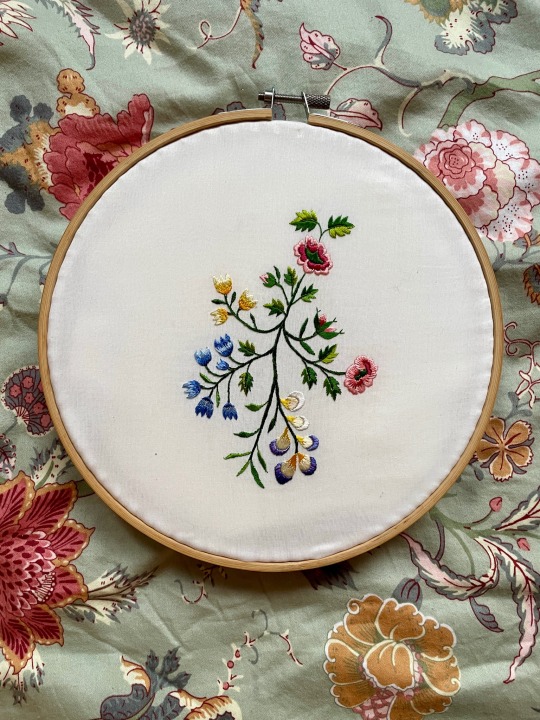

finished the second silk sampler (so fourth overall) for my Emma (2020) embroidered proposal gown!! time to actually make the dress
#embroidery#Emma 2020#emma woodhouse#my work#emma wip#wip#sewing#regency#historical fashion#historical costuming#regency fashion#historical sewing
90 notes
·
View notes
Text
When rage against the machine was making up their name i bet they were talking about sewing machines bc i too rage against that machine
#every time i try to do something by machine stuff goes wrong#my hands are so much more reliable… but… machine fast… but threaterous….#sewing#sewing machine#historical sewing#historical costuming
59 notes
·
View notes
Text
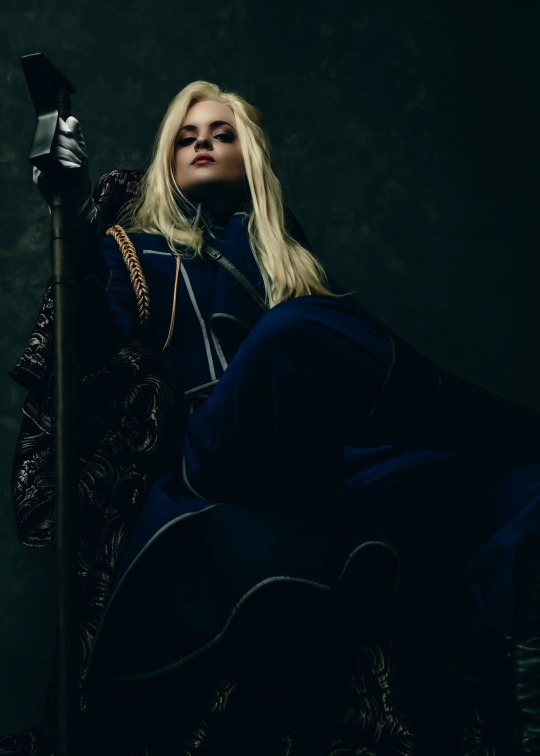
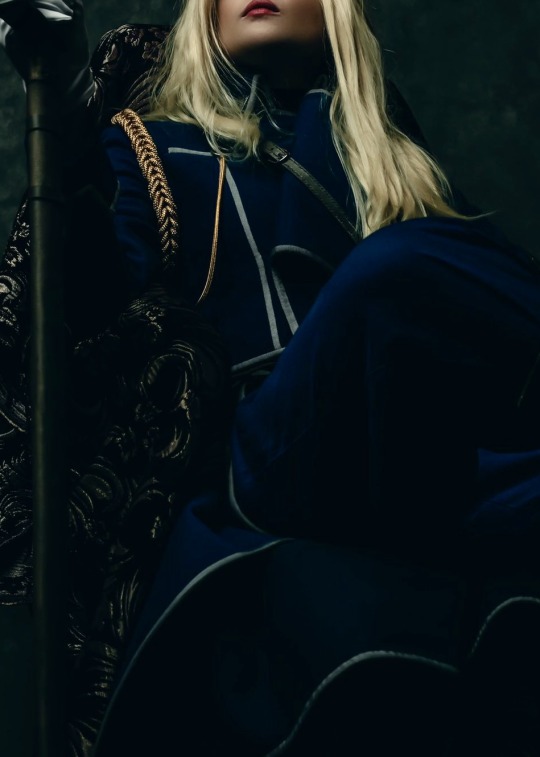


On October 3rd, Elric asked me what day it was.
I said, ‘How dare you to talk to me, you coward.’
Major General Olivier Mira Armstrong
Traditionally tailored uniform, 2019
Japanese twill, canvas, grosgrain, leather, gilt braid
#project: major general Olivier Mira armstrong#media: fullmetal alchemist#fma#fullmetal alchemist#Olivier Armstrong#fullmetal alchemist day#extant projects: 2019#tailoring#historical costume#historical sewing#cosplay#poetry in costume#I’m still so sad about my wig in this shoot - it took me a while to really nail the armstrong curl plus this was the hottest day that year#and I moved a bunch of furniture around after I was bewigged so that really messed things up. oh well!#at least I nailed it for competition#tho I have exactly one selfie to prove that
398 notes
·
View notes
Text

I’ve made a special corset
#corsetry#historical fashion#handmade#historical sewing#corsetmaking#my sewing#sewing#aesthetic#angel aesthetic#angelcore
183 notes
·
View notes
Note
Do you have recommendations for dress history youtube channels? I'm a very bookish person, an amateur historian of literature, and i want to understand the practical side of how clothes were made and worn. the pictures in my books only go so far.
Sure! There's some books that also go into the historical construction of clothing, most notably Janet Arnold's Patterns of Fashion series, which is an invaluable resource. Here's my most recommended YouTube channels who do historical costuming and talk about dress history in general:
Nicole Rudolph
Abby Cox
Morgan Donner
Cat's Costumery
Snappy Dragon
Bernadette Banner
priorattire
Adelaine Beeman-White
Karolina Żebrowska
Samantha Bullat
88 notes
·
View notes
Text
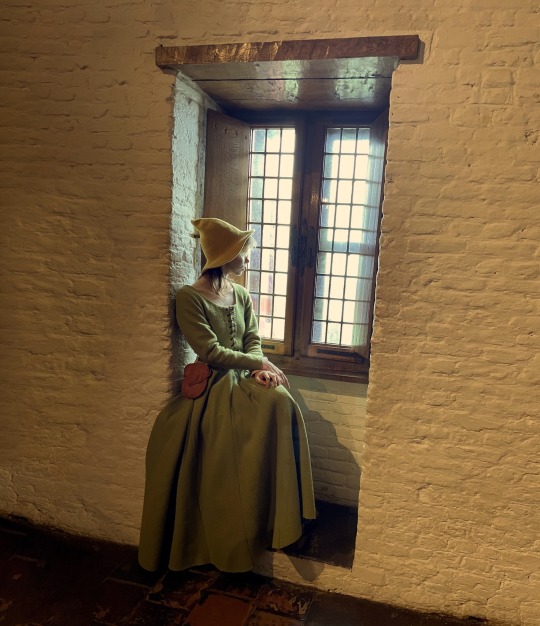
Wore my new kirtle to Muiderslot today!!
#historical reproduction#historical reenactment#history#medieval#medieval fashion#medieval reenactment#larp#medieval larp#kirtle#historical sewing#historical costuming#historical fashion#costumes
40 notes
·
View notes
Text



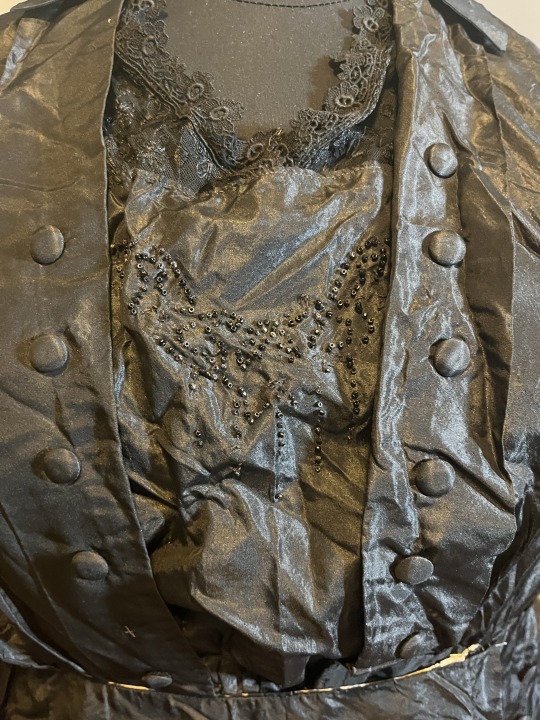
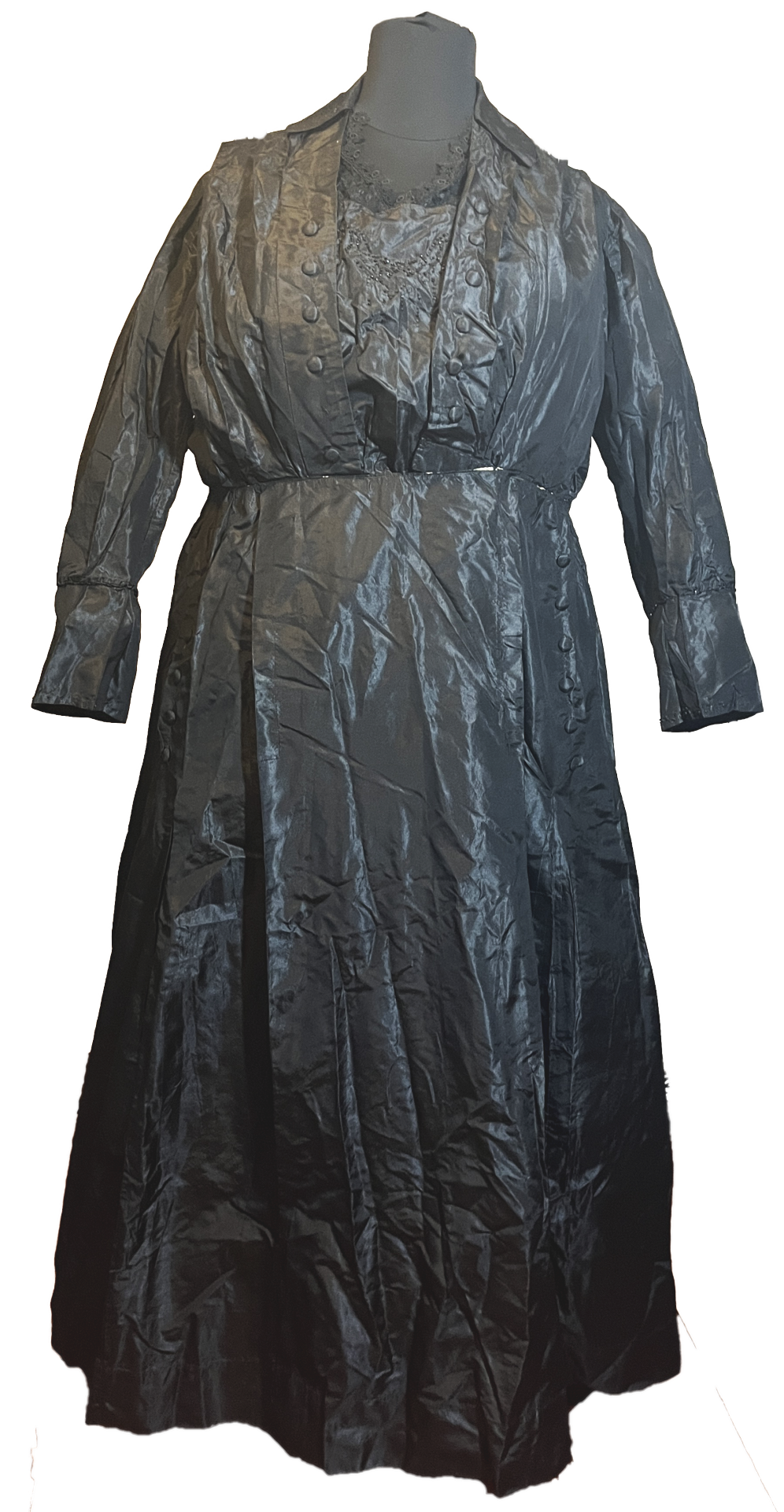
The two newest patterns that I have in testing right now, based on antique plus-size garments...
c. 1909 eleven-gore polka-dotted cotton day skirt
The size as-is is a 37”/94cm waist with 60”/152cm+ hips, and ungathered it’s a 46.5”/118cm waist. It was made for a very short person, so I’ve provided the original length (32”/81cm) as well as an extended version (40”/102cm) on the pattern for whatever you need. On Etsy here.
c. 1915-17 silk day dress with beading
This has a 60” (152cm) bust and 45.5” (116cm) waist and was made for a relatively tall person. On Etsy here.
Both are now up on Etsy!
48 notes
·
View notes
Text
18th century inspired costume featuring back lacing stays. They are sewn mostly by machine, but the tabs are binded by hand and eyelets are also sewn by hand.
Also i feel like a character in Marie Antoinette movie from 2006 while wearing them hihi

Hair, makeup, model and photo by me<333
#historical reenactment#historical sewing#18th century#rococo#versailles#rococo fashion#18th century fashion#hand sewing#sewing#marie antoinette#historical costuming#18th century stays
92 notes
·
View notes